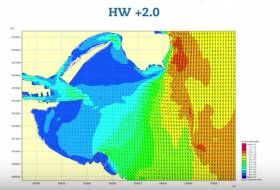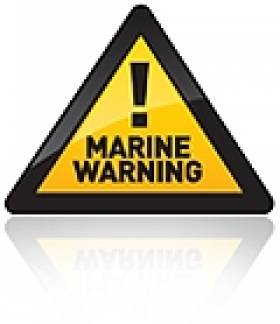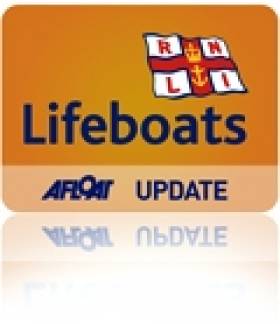Displaying items by tag: Spring tides
Spring Tide Warning of Localised Flooding in Galway City
High astronomical spring tides this week have prompted Galway City Council to issue a warning about localised flooding.
The city council says it is likely that some wave overtopping may occur at Salthill on Wednesday and Thursday (March 22nd and 23rd).
It says the areas around the Docks and Spanish Arch in Galway city may experience localised flooding during high tide periods on Wednesday morning through to high tide on Thursday morning.
It advises road users in these areas to “proceed with caution”, and it has closed car parks at Toft Park, Salthill and Silver Strand until further notice.
High tide times “of note” in Galway city are:
- Wednesday 22nd at 5:15 am
- Wednesday 22nd at 5:45 pm
- Thursday 23rd at 5:30 am
- Thursday 23rd at 5:45 pm
It says weather and tidal conditions are “variable”, and it is monitoring the situation “closely “.
Full Moon will Play Role in Dun Laoghaire Regatta 2017
With light to moderate breezes anticipated for much of this year’s Volvo Dun Laoghaire Regatta 2017 which starts tomorrow afternoon, savvy sailors will be cognisant that the Full Moon, which occurs early in the morning of Sunday July 9th, will be playing a role in their activities writes W M Nixon.
A Full Moon means we’re into the rising cycle towards Spring Tides, but fortunately most of the regatta will be taking place in relatively modest tidal ranges. Thus High Water at 1249hrs on Sunday July 9th has risen to just 3.70 metres, and it’s less on all the preceding four days.
However, were the Regatta a fortnight later on July 23rd with the New Moon on Sunday July 23rd, High Water would be pushing towards 4.25 metres, which would certainly make for sporty tides.
But as it is, clued-in competitors will realise that during the progress of this event, tides are going to be that little bit stronger with each succeeding day, and will adapt their tactics accordingly. And in this age of computer analysis of just about everything, Dublin Port Company have produced this very useful live chart of tidal activity in Dublin Bay.
Even if you’re not going racing, it makes for fascinating viewing.
HW Thursday is 1058hrs, Height 3.63 metres. Friday: 1139hrs, 3.66m. Saturday 1200hrs, 3.68m. Sunday 1249hrs, 3.70m.
Full Moon Prompts Weekend Safety Warning
Spring Tides and an uncertain weather forecast can make this weekend more hazardous than usual.
Irish Water Safety is reminding boaters, sailors, surfers, divers and anglers that there is a full moon on Saturday so they need to be aware of spring tides for the weekend coupled with an uncertain weather forecast.
It is important to take a good weather forecast and to factor this in to their plans accordingly. In addition we wish to remind you of the shorter daylight hours and not to be too ambitious when passage planning over the weekend.
On average 153 people drown in Ireland each year so it is essential to wear suitable protective clothing and a properly serviced and fitted lifejacket when on the water and avoid taking unnecessary risks, especially taking alcohol or drugs as approximately 30% of all drowning victims will have consumed alcohol.
Anglers will be at risk and non nationals in particular should be extremely vigilant as the Atlantic swell is dramatically different to that experienced on the relatively calmer Baltic Sea to which many are accustomed.
It is essential that parents or responsible adults supervise their children at all time when near water.
Walkers should remain alert and stay well away from the edge of ordinarily familiar waterside pathways due to the risk of stranding as a result of the high tides.
Remember your lifeline in an emergency is 999 and 112 therefore carry a mobile phone and ask for the Marine Rescue.
If you discover missing or found Ringbuoys then log on to www.ringbuoys.ie to report them, remember, "a stolen ringbuoy is a stolen life"
Five Incidents in Four Days for Cork Harbour Lifeboat
Crosshaven Volunteer RNLI Lifeboat has had a very busy few days as they were tasked to five incidents in four days.
On Thursday evening at 17.59, the Lifeboat was tasked to the upper reaches of Cork Harbour near the city to check out an unidentifiable object in the water. On arrival, the object was found to be a large bag containing foam. Friday evening, saw the Lifeboat heading up the Owenabue River to rescue two punts which had been floated off on the very high Spring tides and were perceived a danger to shipping.
Saturday evening at 20.34, the Lifeboat was again tasked to the North side of Great Island where a 55' Motor Launch with 3 persons on board had mechanical difficulties and drifting in high winds of force 7. On arrival at scene, the crew decided that because of the size and weight of the vessel and the high winds it was safer to anchor the vessel and take off the crew. They were safely landed at East Ferry Pier. As the Lifeboat was returning to Crosshaven, The Coastguard at Valentia again tasked the Lifeboat to search the area between Cobh and Monkstown for an overdue Rigid Inflatable Boat (RIB). After searching for a period, and with nothing found, the Coastguard stood down the volunteer Lifeboat crew to return to station.
Sunday afternoon, and the pagers were again activated at 16.33 to go to the aid of a small boat with engine problems at East Ferry. On arrival in the area, it was noticed that the casualty boat had managed to restart and head into East Ferry Marina.
Related Safety posts
RNLI Lifeboats in Ireland
Safety News
Rescue News from RNLI Lifeboats in Ireland
Coast Guard News from Ireland
Water Safety News from Ireland
Marine Casualty Investigation Board News
Marine Warnings


























































